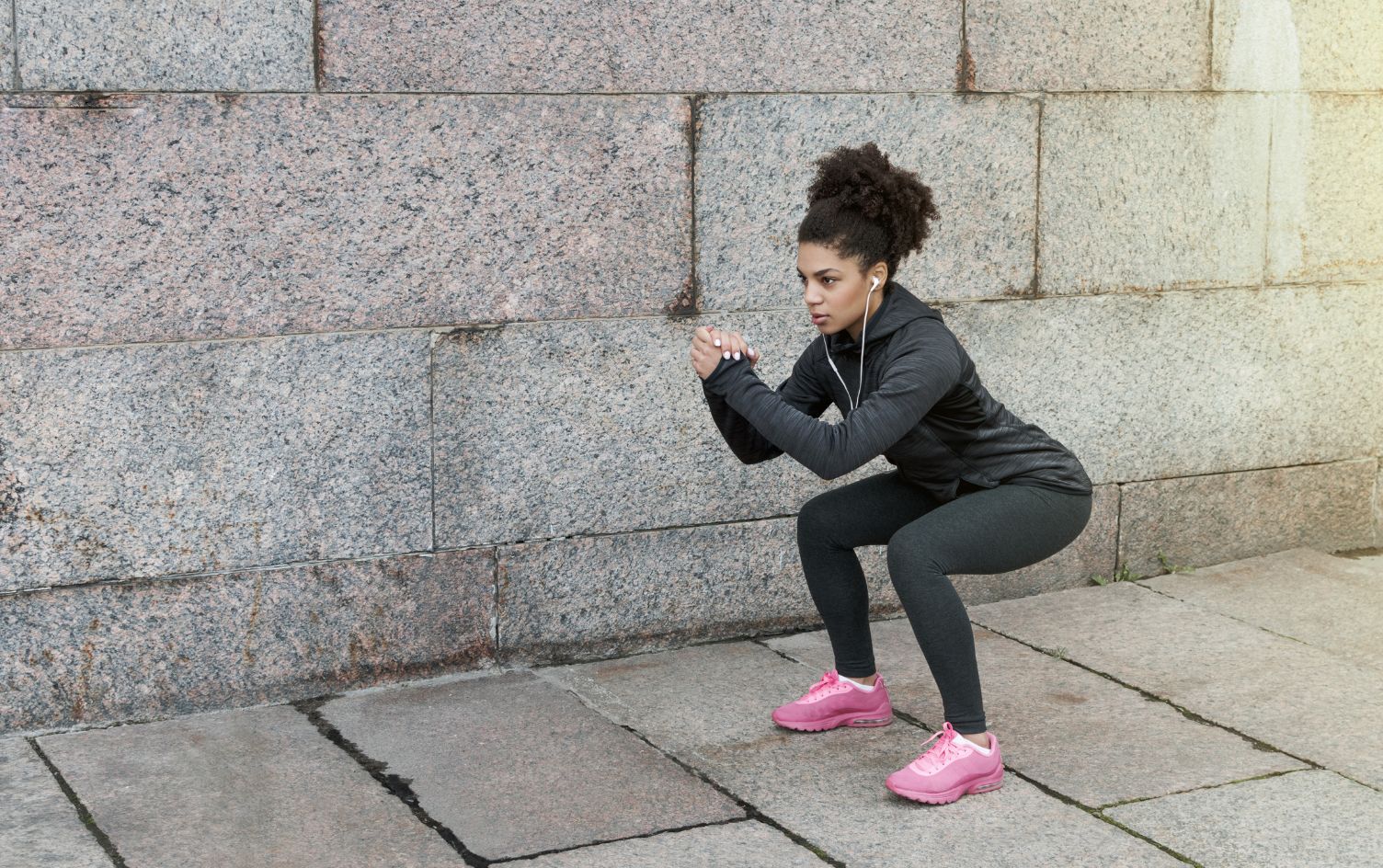A quick glance at social media celebrities will confirm that a toned, muscular backside is in fashion. While J.Lo status isn’t everyone’s goal, there are clear benefits to being able to utilize your glutes on an everyday basis, both in and out of the gym. Yet there are tons of people — even highly active ones — who have what’s called “sleepy” or weak glutes. “I believe this has been a problem for long time, but it’s getting worse due [to] the time we are seated during work, driving, video games and computer and phone usage,” explains Jacqueline Kelly, certified personal trainer, certified strength and conditioning specialist and mental skills coach based in Westminster, Colorado.
Why should you care? Well, there are two main reasons: First, “when you wake up the glutes and improve your capability to activate them, you regain your greatest power muscle, thus improving speed, power, jumping ability and explosion — all of which are major factors in athletic performance,” says William P. Kelley, DPT, a physical therapist and certified strength and conditioning coach based in Miami, Florida. That’s because the gluteus maximus is not only the largest muscle in your core, but also the largest muscle in your body. Second, “it also helps in everyday life, as the glutes help to stabilize your back and provide you with more efficient lifting, stair climbing and even standing capabilities.”
Of course, most people with weak glutes don’t realize they could benefit from some glute-focused exercises, but experts say there are quite a few signs to look out for, especially if you’re spending time in the gym regularly. If any of these sound like you, a personal trainer or physical therapist can provide specific exercises to strengthen your glutes to bring more power and stability to your everyday movements.
One of the most common indicators of glute weakness, regardless of your sport, is knee plain. “When your glutes are weak, the hip can’t control the femur as well, which means less stability,” Kelly explains. “The knee can only do what the foot allows it to do and what the hip can control. So when you are getting up and down, lifting heavy weight or running with weak glutes, the knee becomes less stable and can become injured more easily.”
According to Kelly, another main site of pain for those with sleepy glutes is the lower back. “There are two things [that] happen first when the glutes are weak: loss of hip mobility and low back pain,” she says. “If your hips can’t go through their proper range of motion, then the back gets tired and hurt because its muscles are working too hard.” If you’re performing exercises that don’t directly target the back (Think: deadlifts and squats) but you’re feeling lower back soreness afterward, there’s a decent chance hip mobility is compromised and your lower back is compensating.
To test your hip mobility on your own, one of the easiest ways is to do a deep squat with your hands above your head. “Stick your butt out like you are going to sit in a chair, and see if you can keep your heels on the ground without flaring your feet out,” Kelly says. If you can’t do this, it could indicate weak glutes as the source of poor hip mobility.
“If you perform glute-dominated movements — such as squats — and feel minimal glute soreness with more quad and hamstring soreness, this is a functional indicator of glute weakness,” Kelleys says. By learning to activate your glutes when performing these exercises, you’ll make huge strides in strengthening them.
While this is definitely on the rarer side, it happens. “When the glutes are weak, we lose fascial tension around the hips, and we need that tension to move forward,” explains Kelly. “Without it, we overuse the neck extensors, and this can cause a headache.”
If you notice yourself slouching at your desk or as you go through your everyday activities, it’s more likely than not that your glutes and the rest of your core are weak. “If the glutes are not active, the spine begins to slouch, causing everything else to fall apart,” says Kenny Santucci, program manager at Solace New York.
READ MORE > A RUNNER’S GUIDE TO INJURY PREVENTION
Awareness of, and ability to tense, a specific muscle in your body on demand can be a good indicator of how strong that muscle is. “When laying face down, if you cannot independently squeeze one glute and then the other with strong and equal force, it is a strong indicator of poor glute activation and control,” Kelley says. To test this at home, simply lay on your stomach and place your hands on your backside. Try to squeeze each side of your glutes independently. If you can feel a difference or can’t feel the muscle tensing strongly, you may want to check in with an expert to learn how to utilize them for greater fitness gains and reduced risk of injury.




